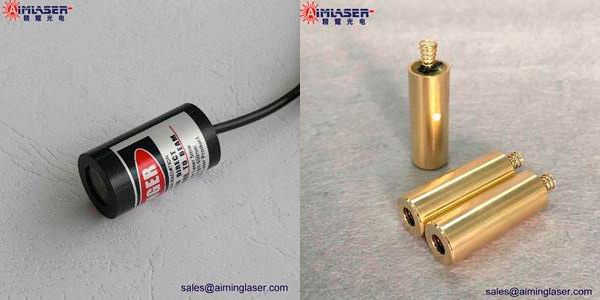Blue laser diode. The first blue semiconductor laser came out in 1999, marking that the application of the next generation of optical storage is not far away. With the introduction of the "Blu ray Disc" plan in 2002, specifically, Blu ray LD can realize the storage capacity of 27GB on a 12cm disc, which is six times that of the existing technology. It can realize the storage of all digital information, which greatly facilitates the entry of digital products into families and people's offices.
LD direct frequency doubling blue laser. In 1994, the Germans used a single kn for circular frequency doubling and LD optical frequency self-locking at the same time. Under the incident power of 90mw and 856nm, the blue laser output of 22mw and 428nm was obtained. Using real-time closed-loop feedback, the beam quality is effectively controlled, the noise is suppressed, the working stability of the laser is improved, and the laser output of 40mW and 430nm is obtained. Relevant companies are using this achievement to develop products for optical storage.

LD pumped nonlinear conversion blue laser. One method is to use the 809nm laser output by GaAlAs laser diode and Nd3 + ion 1.06 μ The blue light output of 459 nm is obtained by sum frequency of M laser. In 1987, researchers used sum frequency method to obtain 0.96 MW blue light output in KTP crystal. In 1992, the fundamental transverse mode 462nm output of 4MW was obtained in KTP single standing wave cavity by using the method of external cavity resonance enhancement. In 1993, the folded cavity structure was adopted, and a 20MW 459nm blue laser output was obtained by using a 100MW single tube LD. The conversion efficiency of single tube LD blue light was as high as 68%. When changing the matching angle of sum frequency crystal, the tuning width of 12NM was realized, but this technology requires a higher LD for injection. Recently, researchers have developed a mode-locked semiconductor pumped Nd: YVO4 laser amplifier to pump kta-opo. The 1064nm and 1535nm lasers generated by the above method can simultaneously obtain 629nm, 532nm and 446nm trichromatic lasers through frequency doubling and frequency summation process, which can be directly used in the application of laser display.
First, color laser display. The high brightness blue laser system can be used as an all solid standard three primary color light source for color display together with the relatively mature red LD and intracavity frequency doubled all solid green laser. This new laser light source with low power consumption, long life and high beam quality not only has high efficiency (compared with fluorescent light source), but also is more loyal to natural light. It can eliminate the Yellow shadow produced by incandescent light source and the green shadow produced by fluorescent light source, and realize the balance of three primary colors.
Second, high density optical storage. Compared with 780nmld, which is commonly used as light source at present, the advantages of blue laser are wave length and small spot area. If the storage medium is more sensitive to short wavelength laser and new coding technology is adopted, the storage density can be increased by nearly one order of magnitude. According to the current Blu ray Disc plan, the storage capacity of 27GB can be realized on a 12cm disc, which is six times that of the existing technology, and all digital information can be stored.
Third, digital video technology. The most encouraging application of all solid state blue laser is as a light source for CD-ROM, CD and DVD in the field of digital video. According to akito Iwamoto of Toshiba's multimedia laboratory, it is expected to launch a read-only digital video disc with blue laser as the light source in 2005. After properly improving the performance of the numerical aperture and digital processing circuit of the optical system, its capacity can reach more than 7 times that of the CD-ROM with 635nm red light LD as the light source.
Fourth, ocean water color and ocean resources exploration. The blue laser light source between 400 nm and 450 nm is a powerful weapon for sensing the color of ocean water and can be used to detect marine fishery resources.
Fifth, laser refrigeration. Blue laser can be used to capture and damp the thermal vibration of cesium atoms, eliminate the Doppler broadening caused by thermal vibration, and provide guarantee for the accurate measurement of spectral lines.
In addition, all solid-state blue laser light source is expected to be widely used in many fields, such as digital to analog converter, laser and brush technology, laser medicine, biochemical technology, material science and optical communication.